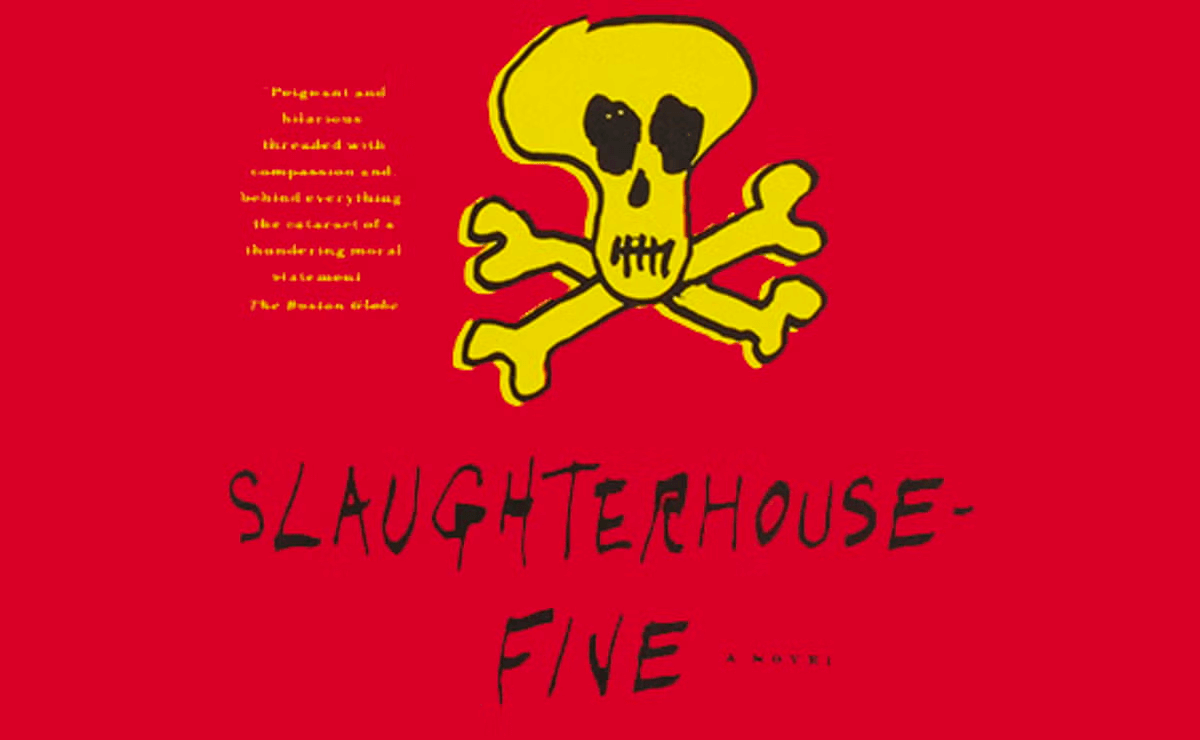Metatextuality plays an important role in the relationship between a text and its audience. But what is metatextuality? And why does it play an important role in the relationship between a text and its audience? We’re going to answer those questions by defining metatextuality, as well as by examining metatextual examples in films/games. By the end, you’ll know the answer to the ever-so-elusive question, “what does metatextuality mean?” Let’s get meta.
Metatextual Meaning
First, let’s define intertextuality
Intertextuality and metatextuality are often confused as the same thing. However, they’re actually very different. Before we define metatextuality, we have to first define intertextuality.
Intertextuality is the relationship between a text and another text. For example, the video game Yakuza: Like a Dragon is built upon an intertextual relationship with Dragon Quest; Dragon-to-Dragon – it’s right in the name!
This is used much more frequently than metatextuality. Partly because it’s easier to reference another text than it is to reference one’s own text.
With that distinction out of the way, let’s define metatextuality!
METATEXTUALITY DEFINITION
What is metatextuality?
Metatextuality is the relationship between a text and itself. Wait, what? You read that correctly – metatextuality is a self-referential literary device, used both implicitly and explicitly.
Types of Metatextuality:
- Overt: 8 ½, Being John Malkovich, The Matrix Resurrections, The Stanley Parable
- Subtle: Beginner’s Guide, The Other Side of the Wind
Meta Textual Guide
Overt metatextual examples
Metatextuality has played a huge role in auteur cinema for decades. One of the most famous examples of metatextuality in film can be found in Federico Fellini’s 8 ½.
In fact, the name 8 ½ – which is anglicized in number form via the Italian title Otto e Mezzo – is a not-so-veiled reference to the metatextual fact that the film is indeed, Fellini’s eight-and-a-half' film.
Don’t just take my word for it: here's renowned film critic Mark Kermode.
Metatextual Definition • 8 ½ Review by Film Critic Mark Kermode
8 ½ is regarded as one of the greatest films of all-time; yes, for Marcello Mastroainni’s signaturely masterful performance, Gianni Di Venanzo’s stunning cinematography, and Piero Gherardi’s Academy Award winning costume design; but also for its self-referential story about a director at a creative crossroads.
That director? By character name: Guido Anselmi. By metatextual interpretation: Federico Fellini.
Perhaps the greatest part of the 2021 film The Matrix: Resurrections is its self-referential relationship with the fact that it's a remake of an original IP; allusions to pop-culture and Warner Bros. included. In the movie, it's a video game trilogy that was made previously but the allusion to the original film trilogy is more than obvious.
The Matrix 4 Discussing The Matrix 4
Charlie Kaufman’s Being John Malkovich script is a case-study in metatextuality. The story follows a puppeteer who finds a portal into John Malkovich’s mind. Who is John Malkovich? An award-winning actor. Does he really play himself in the movie? Yes, he does.
Through this, Kaufman builds a bridge between the real and fictional world. This bridge is regarded as metatextual because it is more of an extension of itself than it is a separate entity.
This next video from Renegade Cut examines some of the metatextual themes of Being John Malkovich in further detail.
Meta Textual Film Analysis • What is the Mind?
Charlie Kaufman’s scripts are full of intertext and metatext. If you’re interested in learning more, check out our articles on the best Charlie Kaufman movies.
Metatextual Definition in Games
Subtle metatextual examples
Subtle metatextual properties are usually not explicitly self-referential. That is, they don’t refer to themselves in their title.
The Beginner’s Guide, from renowned game developer Davey Wreden, is a perfect example of subtle metatextuality.
The Beginner’s Guide isn’t narrated by a character like the one in Wreden’s previous work The Stanley Parable; instead, it’s narrator by its creator, who, by way of interactivity, guides the player through a series of “levels” designed by a person named “Coda.”
At first, these levels seem benign in nature, but as Wreden progresses through the file folder, he begins to notice troubling signs pointing to Coda’s mental state; faulty game mechanics, pervasive prison imagery, and an obsession with tedium, to name a few.
Perturbed, Wreden edits the games to make them more “accessible.” In the process, he alienates Coda, and succumbs to the guilt of ruining their connection. But is that really what The Beginner’s Guide is about? Ian Danskin argues in his video essay “The Artist is Absent: Davey Wreden and The Beginner’s Guide” that Wreden and Coda are the same person; and that the player should be able to recognize this fact through textuality.

“The Beginner’s Guide opens with a literal narrator telling us what – if we didn’t know it going in is easy enough to verify – the game is the product of an indie developer named Davey Wreden, who made The Stanley Parable. The voice we hear is also a Davey Wreden who made The Stanley Parable... Davey the narrator, early on, makes it clear that he too accepts this premise that author and narrator are the same person...The games become as Davey sees them. The way that some readers will ignore parts of the text in order to fit it to one of their pet theories about the author, is here literalized by changes to the game’s code.”
— Danskin
This brilliant video essay from Danskin of Innuendo Studios breaks down the metatextual layers of The Beginner’s Guide. Prose and script writers can glean a lot of insight from watching this!
Using flat lighting for flawless skin
So, in the same way, a book might explore the idea of its author making alterations to their friend’s book, The Beginner’s Guide too explores the idea of its author making alterations to their friend’s game. This is, at the very least, the basis of meta-textuality; or that which makes critical statements about itself through the medium of its own text.
But unlike examples from literature and film, The Beginner’s Guide is different, simply because it adds an additional layer to the meta-textual onion.
If a traditional, meta-textual book goes from author to text to text to reader, then The Beginner’s Guide goes from author to text to author to text to author to player.
Orson Welles’ final film The Other Side of the Wind is another implicit example of metatext. The Other Side of the Wind – which is the name of the movie being made in The Other Side of the Wind – is about a once prodigious Hollywood director, his protege, and the pursuit of one last great film.
Orson Welles' metaxtexual film The Other Side of the Wind
That director? A la 8 ½; by character name: Jake Hannaford (played by John Huston). By metatextual interpretation: Orson Welles. That prodigy? Well, perhaps ironically, Brooks Otterlake by character name, but by truth, Peter Bogdanovich (who was Welles’ real prodigy). As for that final great film – the answer is the same; in both cases, it’s The Other Side of the Wind.
Only by understanding the metatextual nature of The Other Side of the Wind can we truly appreciate its story.Metatextual Definition in Literature
Metatextual Techniques
One common complaint about metatextuality is that it can take the audience out of the story, especially if it’s overtly meta. There are a few techniques that filmmakers can use to create a meta moment that doesn’t derail the story.
Voice over narration is often used as a tool for inserting metatextuality. That’s because it’s easy: the narrator can quickly address the audience, and the story can be on its way.
In Barbie, a metatextual narration line is used as a punchline. Barbie is talking about how she feels ugly, and the narrator jumps in to say that the filmmakers shouldn’t have cast Margot Robbie to make this point.
The scene continues, but the audience has for a moment been made aware about the creation of the Barbie film.

Metatextuality in Barbie
Another way to create metatextuality is in a flashback or flashforward. By manipulating the timeline more overtly, a filmmaker can draw attention to the medium they are working within.
This can also work in books. Take Slaughterhouse-Five. Kurt Vonnegut tells his story through a nonlinear timeline with many flashbacks, but the protagonist is experiencing this timeline linearly, so he is discombobulated. This metatextuality effectively depicts the feeling of PTSD.

Vonnegut’s masterpiece
The most overt meta move is to break the fourth wall. A character looks at the camera, and addresses the audience. It’s metatextual because by doing so, the character is implicitly acknowledging they are in a film.
Metatextual Definition in Literature
Metatextuality in Literature
Before films and video games were nodding to themselves, literature was around experimenting with metatextuality.
Let’s go through a few famous examples.
The Canterbury Tales (1387)
Yes, metatextuality has existed long before film and video games. In The Canterbury Tales, Geoffrey Chaucer plays with form to create a collection of stories within an overarching story.
Throughout the complex narrative, the fourth wall is broken to clarify certain plot points, or to apologize for certain offensive material.

One important piece of writing
The Handmaid’s Tale (1985)
In her seminal work, Margaret Atwood includes an epilogue in which characters discuss the book as though it is a historical document. This is a great example of a meta moment further inserting a reader into the world – the story itself is part of a larger history.

From the TV based on the book
The Dark Tower Series (1982 — 2012)
MAJOR SPOILERS AHEAD!
There are many fascinating things in Stephen King's The Dark Tower series. But one of the most intriguing and beguiling is the metatextual qualities that begin to seep in. Specifically, the fact that Stephen King himself becomes a character and that if he doesn't finish writing the books, the Dark Tower at the center of all worlds will fall. The characters in the book must actually save their own author's life so that he may complete this task.
It is a genius bit of metatextuality.
Stephen King as written by Stephen King
UP NEXT
What is Subtext?
Metatext isn’t the only type of literary method writers use to communicate unspoken things – subtext is one as well! In our next article, we break down subtext with examples from The Squid and the Whale, Citizen Kane, and more. By the end, you’ll know how to recognize and communicate subtext.

